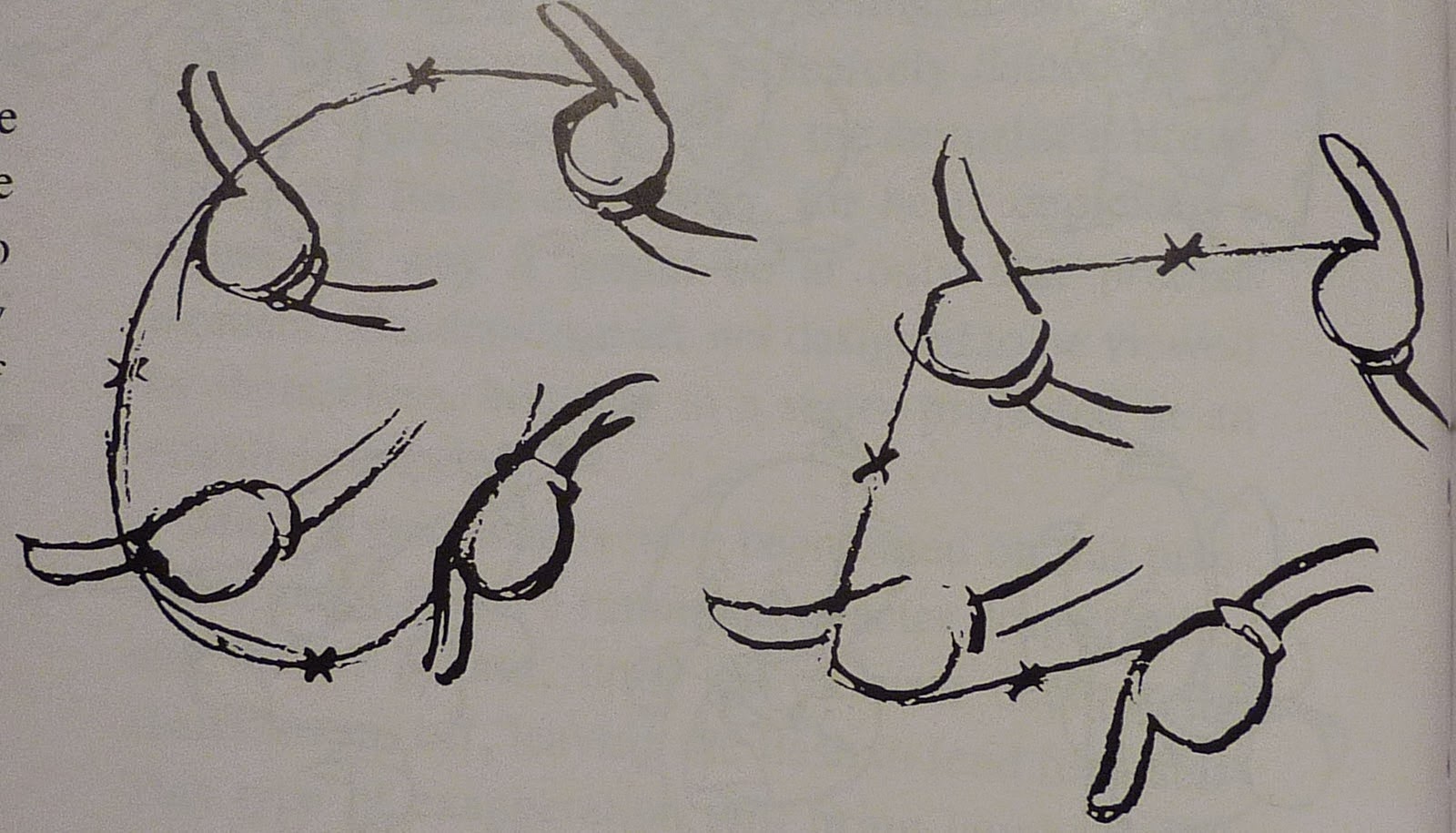Most natural movements tends to follow an arched trajectory, and animation should too for greater realism. For example limbs move by rotating a joint, or a thrown object moving along a parabolic trajectory. The exception is mechanical movement, which typically moves in straight lines.

As an object's speed or momentum increases, arcs tend to flatten out in moving ahead and broaden in turns. In baseball, a fastball would tend to move in a straighter line than other pitches; while a figure
skater moving at top speed would be unable to turn as sharply as a slower skater, and would need to cover more ground to complete the turn.

 An object in motion that moves out of its natural arc for no apparent reason will appear erratic rather than fluid. So when animating for example a pointing finger, the animator should be certain that in all of the drawings (easy to forget when animating pose to pose) the fingertip follows a logical arc from one extreme to the next. Traditional animators tend to draw the arc in lightly on the paper for reference, to erased later.
An object in motion that moves out of its natural arc for no apparent reason will appear erratic rather than fluid. So when animating for example a pointing finger, the animator should be certain that in all of the drawings (easy to forget when animating pose to pose) the fingertip follows a logical arc from one extreme to the next. Traditional animators tend to draw the arc in lightly on the paper for reference, to erased later.
No comments:
Post a Comment